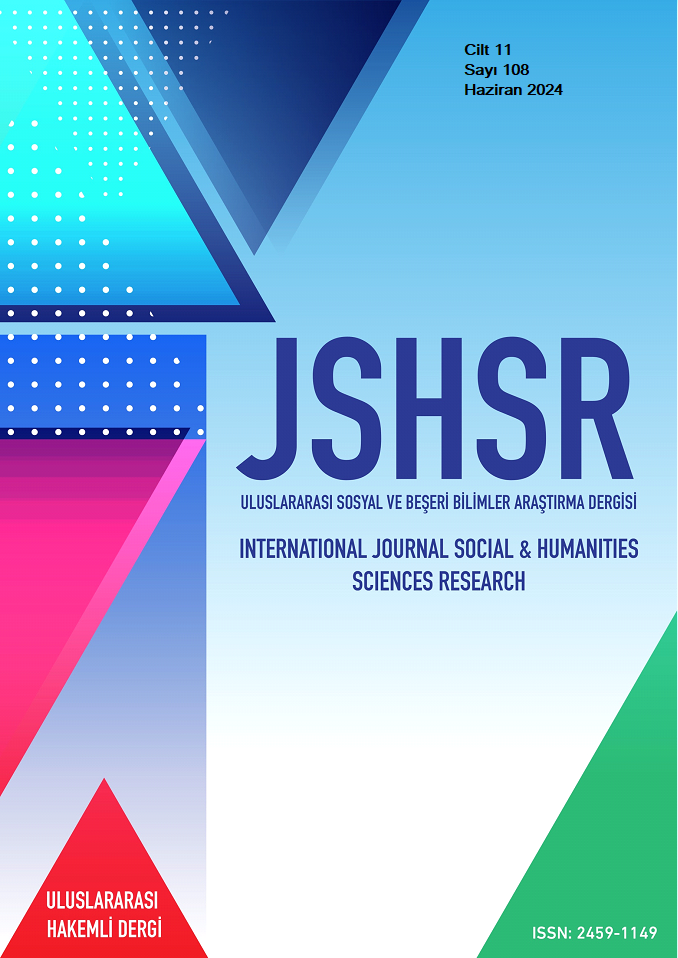Sultan Kaftans Used in Palace Life in the Classical Ottoman Period
DOI:
https://doi.org/10.5281/zenodo.12603004Keywords:
Ottoman, Tradition, Fabric, Chaftan, Sultan, WeavingAbstract
Clothes are indispensable and necessary items for humans due to their biological properties. People, who previously felt the need to cover themselves due to the environment, climate and weather conditions they lived in, have diversified their clothes over time with cultural concepts such as status and fashion. Different civilizations around the world are easily recognized by their various types of clothing that carry characteristic elements specific to their culture. The Ottoman Empire was founded in Anatolia and landed on three important continents: Asia, Africa and Europe. Especially during the period when the Classical Period of the Ottoman Empire prevailed, in the 16th-17th centuries. From the minutes and documents recorded ine centuries, it is seen in the existence of the Ottoman palace and the workshops attached to the palace, the workshop employees were followed, and there were quite a large number of employees in these workshops. However, in the 18th century, the number of masters working in these workshops decreased significantly. There are records of the Ahi organization and Ehl-i Hiref about the fabrics woven in these workshops and for whom the clothes were sewn.
When we examine the clothes used in Ottoman palace life, the caftans made especially for the sultans attract attention with their magnificence and ornaments. These caftans were woven using the best materials of the period in which they were made, especially silk, gold and silver, with techniques, colors, application features, motifs, and pattern compositions. It was woven by the most skillful weavers of the period and sewn by the most famous tailors.
References
Altay, F. (1979). Kaftanlar, Yapı Kredi Bankası Kültür Yayı¬nları.
And, M. (1982). Osmanlı şenliklerinde Türk sanatları, Kültür ve Turizm Bakanlığı Yayınları.
And, M. (1993). 16. yüzyılda İstanbul, Akbank Kültür ve Sa¬nat Yayınları.
Atasoy, N. (1997). 1582 Surname-i Hümayun düğün kitabı, Koçbank Yayınları.
Atasoy, N., Denny, W.B., Mackie, L. W. & Tezcan, H. (2001). İpek Osmanlı dokuma sanatı, TEB İletişim ve Yayıncılık.
Baker, P, L. (1990), The court context, Halı, 12 (51), 131–135.
Baker, P. & Tezcan, H. & Wearden, J. (1996). Silks for the sultans, Published by Ertuğ & Kocabıyık.
Cenkmen, E. (1948). Osmanlı sarayı ve kıyafetleri, Türkiye Yayınevi.
Dalsar, F. (1960). Bursa’da ipekçilik, Sermet Matbaası.
Gürsu, N. (1986). Türk dokumacılık sanatı, Redhouse Yayınevi.
Koçu, R. E. (1967). Türk giyim, kuşam ve süslenme sözlü¬ğü, Sümerbank Yayınları.
Kütükoğlu, M. (1983). Osmanlılarda narh müessesesi ve 1640 tarihli narh defteri, Enderun Kitabevi.
Ortaylı, İ. (1986). İstanbul’dan sayfalar, Hil Yayınları.
Öz, T. (1946). Türk kumaş ve kadifeleri I, Milli Eğitim Basımevi.
Öz, T. (1951). Türk kumaş ve kadifeleri II, Milli Eğitim Basımevi.
Öztürk, H. & Yazar, T. (2017). Dokuma ve motif özellikleri açısından sembolik değer olarak Osmanlı padişah kaftanları ve şifreleri, Researcher: Social Science Studies, 5 (10), 148-169. https://dergipark.org.tr/tr/download/article-file/2151468
Râsim, A. (1994). Osmanlı tarihi (seçmeler), İ. Parmaksızoğlu (Der.), Milli Eğitim Basımevi.
Reyhanlı, T. (1983). İngiliz gezginlerine göre XVI. yüzyılda İstanbul'da hayat (1582-1599), Kültür ve Turizm Bakanlığı Yayınları.
Şehsuvaroğlu, H. Y. (1961). Çocuk elbiseleri sergisi, Topkapı Sarayı Müzesi Yayınları.
Tansuğ, S. (1993). Şenlikname düzeni, Yapı Kredi Yayınları.
Taşkın, B. & Cangökçe, H. (2005). Ottoman kaftans, Cornucopia Magazine, (34), 7-14.
Tezcan, H. (2006). Osmanlı sarayının çocukları şehzadeler ve hanım sultanlarının yaşamları, giysileri, Aygaz.
Uğurlu, A. (1987). Osmanlı yönetiminde Anadolu dokuma sanatı. İlgi, Apa Ofset Basımevi, (51), 24-29.
Uğurlu, A. (1994a). Osmanlı dokumalarında süs ve ihtişam. İlgi, Apa Ofset Basımevi, (76), 10-13.
Uğurlu, A. (1994b). Osmanlı saray dokumalarında ipek, altın, gümüş kullanımı. Antik & Dekor, Antik A.Ş. Yayınları, (24), 94-98.
Uğurlu, S. S. (2001). Klasik Osmanlı dönemi (16. Yy. ve 17. Yy.) saray dokumalarının motif gelişimleri ve kompozisyon sistematiği. [Yayınlanmamış Yüksek Lisans Tezi]. (101825), SB Enstitüsü, Mimar Sinan Üniversitesi.
Uğurlu, S. S. (2019). Geleneksel sanatın toplum yaşamına etkisine bir örnek: Osmanlı sarayı tören kaftanları, Sanatta gelenek gelenekte sanat sempozyumu, Zeynep Koç Şereoğlu Danış vd. (Ed.), Ümraniye Belediyesi Kültür Yayınları.
Yaman, B. (2018). Sarayın terzileri 16-18. yüzyıl Osmanlı hassa kıyafet birimleri, Kitap Yayınevi.
---- (1958). Kanuni Sultan Süleyman sergisi, Topkapı Sarayı Müzesi Ya¬yınları.
Downloads
Published
How to Cite
Issue
Section
License
Copyright (c) 2024 INTERNATIONAL JOURNAL OF SOCIAL HUMANITIES SCIENCES RESEARCH

This work is licensed under a Creative Commons Attribution 4.0 International License.


